Traditional markets in farthest nooks of the world are something more than a way of shopping fresh food. It is often a place for communication and a main focus of rural daily life, an integral part of community life and the centre of tradition, offering the kind of atmospheric experience that big malls often lack. No wonder, they require from architects thorough investigation of market-goers and sellers’ needs before designing a market building.
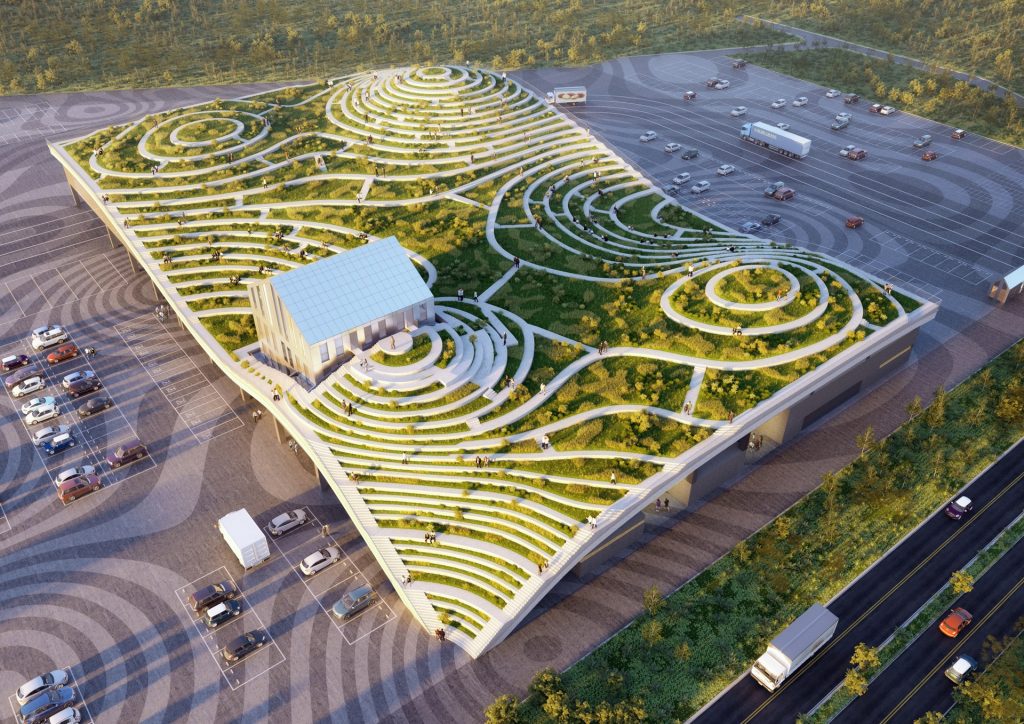
The renowned Rotterdam-based MVRDV studio has designed the Tainan Xinhua Fruit and Vegetable Market in Taiwan, elevating this often-prosaic part of food retail into a place where the public can experience food and appreciate the views. The completion is due in late 2020.
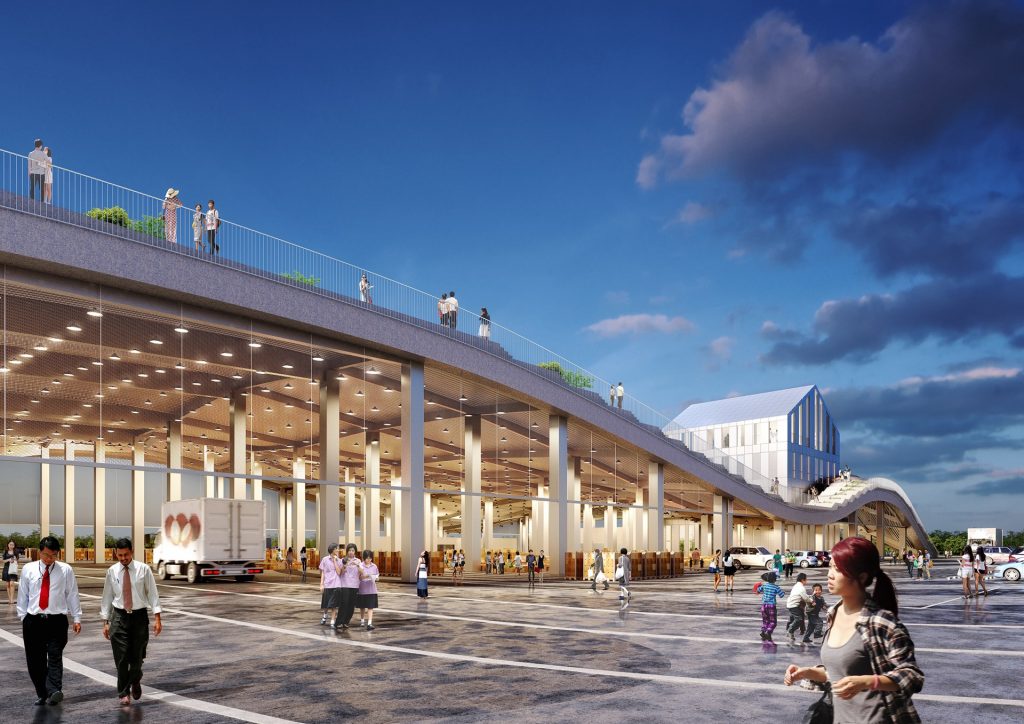
Tainan Xinhua Fruit and Vegetable Market by MVRDV (also header image)
The design comprises a simple open structure with high undulating ceilings that allow for natural ventilation as well as a four-storey addition containing the market’s administrative offices, a restaurant, and an exhibition centre. The focal point of the design however is a terraced green roof which will house different products of the area, each terrace growing a different crop – pineapples, rice, roses, tea and more. The roof includes sheltered spots, benches and picnic tables that will allow visitors to sit and enjoy the view characteristic of this part of Taiwan. On the exterior, the building blends with the surrounding green hills, becoming a part of the landscape.
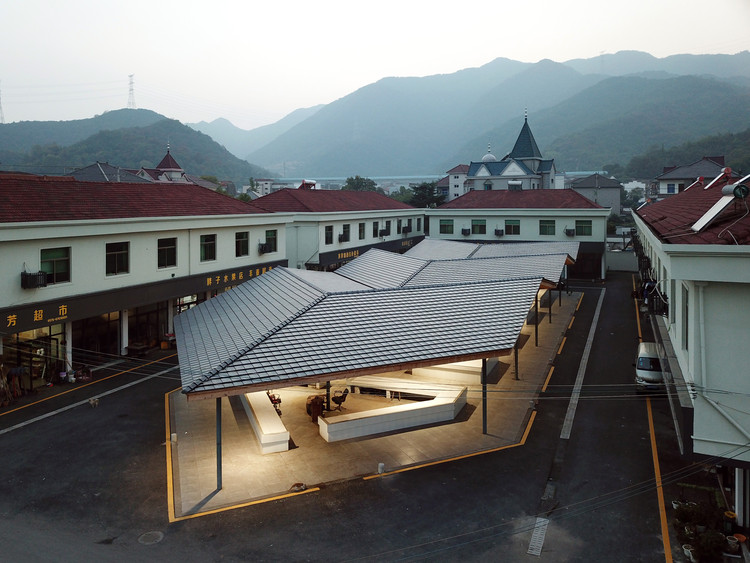
Market in the Xiafu Village, China by Bengo Studio; ph: Chen Hao (source: Archdaily)
When Shanghai-based firm Bengo Studio was commissioned to renovate the market in Xiafu Village, China, they arranged for their architects to live with the villagers, so they could investigate the needs of the community. The original building constructed in 2003 was the largest and the most important public building in the village and the starting point for the villager’s daily life. However, the construction not taking into account the villagers’ need as well as rapid economic changes brought farmers to abandon the market and place their stalls directly alongside the road that runs in front of the market.

Market in the Xiafu Village, China by Bengo Studio; ph: Chen Hao (source: Archdaily)
Bengo’s design strategy suggested only two changes but they made the market flourish. The original linear sloping roof was replaced with a continuous folded roof which helped dispel the architectural boundary and welcome villagers to enter from any direction. The folded roof also greatly improved the lighting situation under the eaves. The layout of the stall was also changed to resemble the square Chinese character ‘回’, to make a clear division between the sellers’ and the buyers’ zones, thus giving the sellers a sense of owning the place.
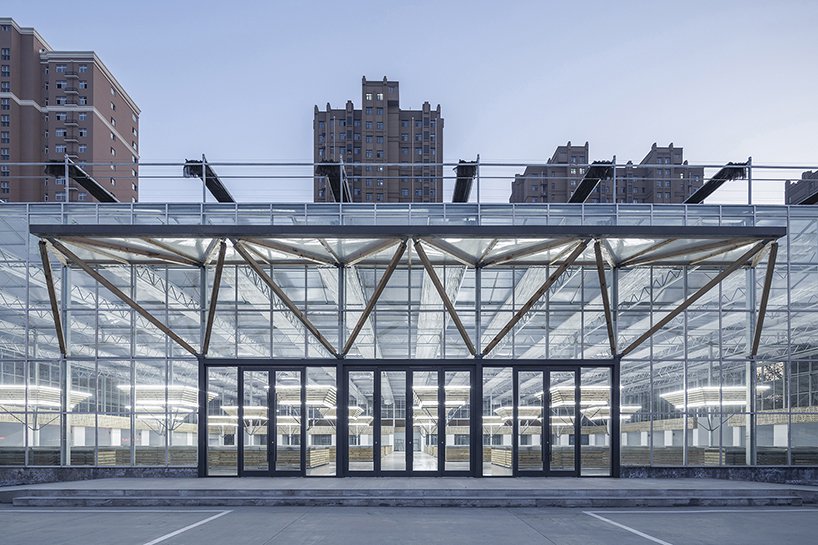
Temporary market in Puyang, China by LUO studio; ph: Jin Weiqi
Chinese architecture firm LUO studio has designed a large temporary structure in Puyang, China, to be used during reconstruction of the existing Shengli urban market. The architects were challenged to create a building ensuring low costs, short construction time as well as keeping with the sustainable credentials of a temporary structure that can be recycled and reused in the future.
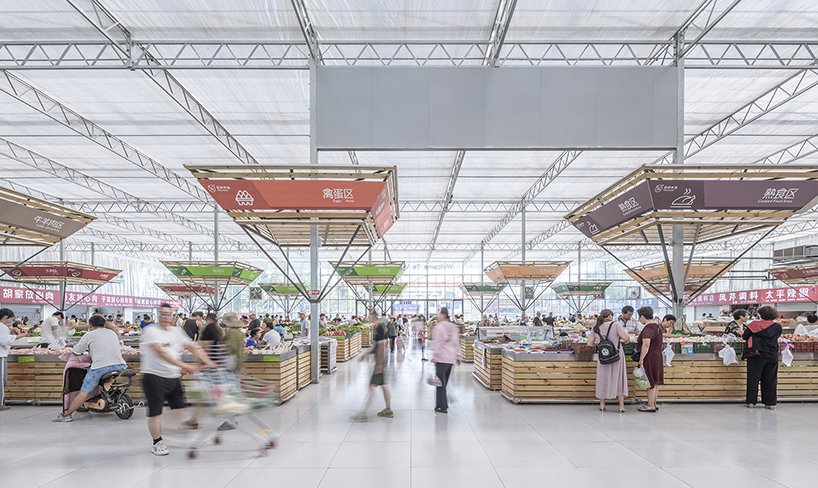
Temporary market in Puyang, China by LUO studio; ph: Jin Weiqi
The resulting design includes modular pre-fabricated uniform units of steel and timber, creating an orderly and functional layout. Inverted pyramid frames form the entrance canopy, reducing material usage while providing structural stability. This shape is repeated inside and serves for placing coloured navigation signs and light fixtures.
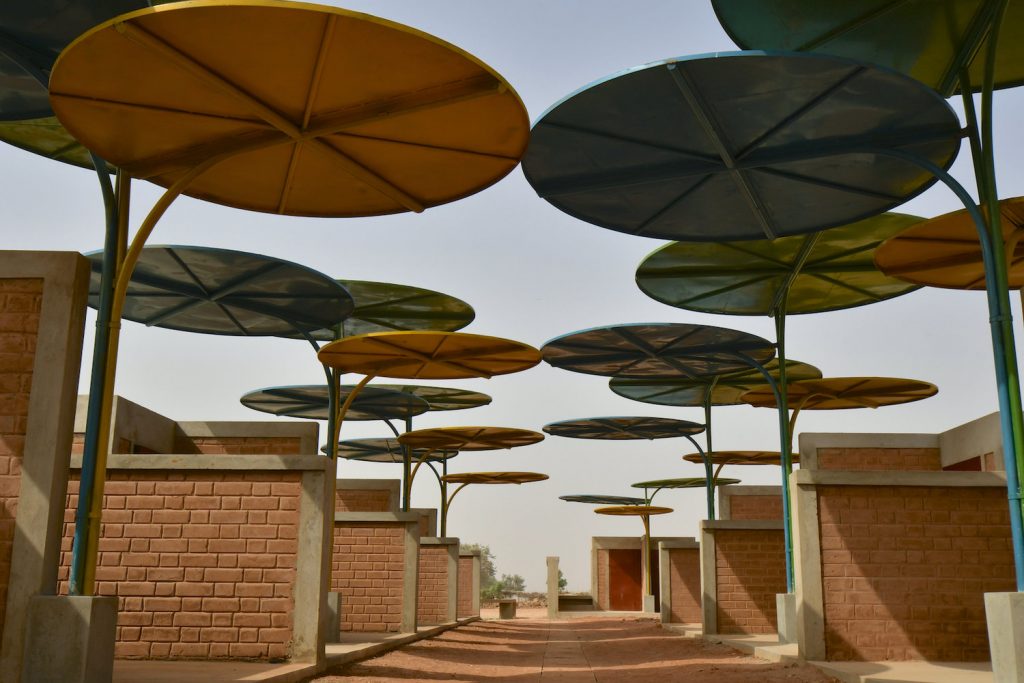
Market in Dandaji village, Niger by Atelier Masomi; ph: Maurice Ascani
Niger-based Atelier Masomi referenced traditions of the community when designing a rural market in Dandaji village. The original weekly market was organized around an ancestral tree that has become the public space for sale and communication. The new project stays on the same site, its design kept very simple. A colourful recycled metal canopy is formed by a succession of individual shading structures that are used instead of trees which are difficult to grow in such an arid climate. The difference in level of the various discs allows for natural ventilation, while their shade protects market-goers and sellers from the scorching sun. On top of that, the umbrella-like shapes are visually attractive creating a whimsical world that complements the colorful goods on display.